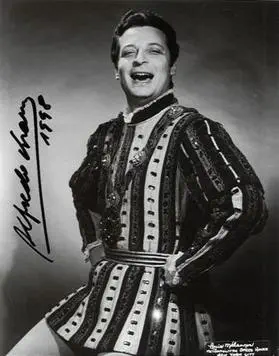Because I got high #4
Quick facts about the operatic tenor voice

- Interpolate
When tenors sing unwritten high notes (like the high C in Di Quella Pira from Verdi’s Il Trovatore or in No, no principessa altera from Puccini’s Turandot), these notes are said to be “interpolated”. As someone who is used to working with acoustic signals, time series and numbers, I spontaneously interpret “to interpolate” as “to add a number or item into the middle of a series, calculated based on the numbers or items before and after it” (Cambridge Dictionary Online, my emphasis).
When singers “interpolate” high notes, they actually go beyond the notes that occur before or after them; in other words, if we were to follow the mathematical definition, it would be more accurate to use the verb “to extrapolate”. As it turns out, the non mathematical definition of “interpolate” is “to add something in the middle of a text, piece of music” (Cambridge Dictionary Online), which is consistent with what tenors do when they sing those high Cs.
So maybe we should say that they interpolate extrapolated notes? Well… the Oxford English Dictionary has an obsolete definition for “extrapolate”, by analogy with the non mathematical definition of “interpolate”: to remove a passage from a text. This is quite confusing because “to extrapolate” can therefore have two opposite meanings: to add or to remove something…
- Downtuning arias
It is not uncommon in opera to downtune arias containing very high notes. Quite a few versions of Di Quella Pira or Che Gelida Manina from La Bohème sung a half step lower than the composer originally intended can be found on Youtube, even when performed by the greatest. On a side note: the pitch of Youtube videos may sometimes not be faithful to the recording due to errors in playback speed or sampling rate errors during digitization (which amounts to the same thing). Also: orchestras used to have a range of different references pitches (in other words the same note could be slightly lower or higher depending on the orchestra).
Now if, like me, you don’t have perfect pitch, it doesn’t make much of a difference whether the tenor belts out a B4 or a C5, provided the note displays the right colour and strength. For example, in the following video, Luciano Pavarotti sings a B4 (live) to gather his soldiers: the incredible quality of his note would clearly convince me to follow him 😃
Now, I’ve always assumed that it was the highest note in an aria that caused singers to tune it down. But it is not always the case. Towards the end of this video, the tenor Michael Fabiano, while analyzing the aria Che Gelida Manina and the famous high C on the words “la speranza”, says that he now tranposes it down not because of the high C. He actually finds it hard to go from [i] to [ɔ] in “chi son” in the original key, i.e., going from Db4 on “chi” to Bb4 on “son”. He says he finds it “much easier” to do the same thing a half step below.
- The French Liaison
For me, the Spanish tenor Alfredo Kraus was probably one of the most intelligible non French tenors when he sang in French (the best French diction among non francophone historical tenors being IMHO that of Nicolai Gedda: here you’d swear he was a native speaker of French!). It is therefore very surprising that in the aria Pour mon âme in Donizetti’s La fille du régiment he would fail to produce the “compulsory” liaison between “mon” and “âme”. Actually, from this video, it is clear that Kraus produced the liaison at the begining of the aria (which is vocally less demanding) but not when singing the high Cs. This suggests that he knew the correct pronunciation but technical constraints led him to favour singability over diction.
As I was listening to Kraus’s interpretation of Je crois entendre encore from Bizet’s Les pêcheurs de perles here, I noticed (in addition to his singing the wrong words in the first line) that he had a liaison between “nuit” and “enchanteresse”. I first thought it was a mistake but then I listened to a version by Alain Vanzo (who was a francophone) and the liaison was there too. I am quite certain that noone would have a liaison here in spontaneous speech (but of course, one would object that noone would use the word “enchanteresse” in spontaneous speech anyway 🤔). I found an explanation in French Diction for Singers: A Handbook of Pronunciation for French Opera and Mélodie by Jason Nedecky. On page 40:
Liaison is also occasionally made from a small list of singular nouns in order to maintain legato where an especially unpleasant hiatus would otherwise occur. This type of liaison was more readily accepted in the past. It is most often possible in well-known phrases from the repertoire, and should only be made very lightly.
And then the author draws a short list of the most common fossilized phrases belonging to this cateogry, and “ô nuit enchanteresse” from Les Pêcheurs de perles happens to be on the list.